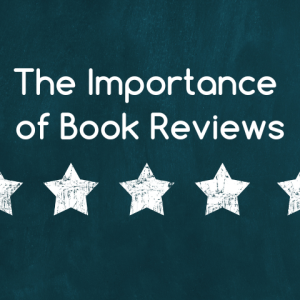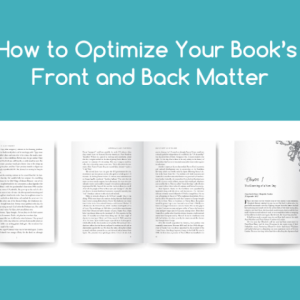Bublish Founder and CEO Kathy Meis makes her predictions for the top four book marketing challenges in 2016.
1. Increasing Competition for Readers’ Attention and Entertainment Dollars
This challenge is an ongoing one, but will get much tougher in 2016 and beyond. According to UNESCO, there are 2.2 million books published each year in the world. And, this startling number only captures those books that can be tracked. A growing number of books, about 30% according to experts, cannot be tracked due to their lack of a unique identifier, such as an ISBN. That is a mind-blowing selection for readers, and one heck of a competitive landscape to navigate. The good news is that most authors now have a global audience for their work, due to the rise of digital distribution, online retailers with a global presence, and social media. The challenge remains finding your target readers among the masses, and capturing their attention and entertainment dollars.
How can you overcome this challenge? Start by clearly understanding your target audience. Do your homework and get as specific as possible in describing them and learning their discovery and buying habits. Once you know who they are and how to find them, you can start drawing them into your creative journey with authentic engagement. Social is great for this. At Bublish, we believe sharing the “story behind your story” is a powerful approach. It tells readers your “why” and helps them understand what went into creating your characters, plots, scenes, etc. It’s the reason every book bubble has an Author Insight. Storytelling is used by some of the biggest brands in the world due to its ability to increase emotional connect and help those brands stand out in a noisy, crowded marketplace. As an author, you’re a natural storyteller. Take that skill and put it to work in your marketing.
2. Lack of Customer Information and Market Data
Any solid marketing campaign requires an understanding of the target market, a way to capture customer information and the ability to measure success. For most independent authors, capturing customer information is a challenge. When online retailers sell your books, they capture the customer info…and they don’t share. This leaves authors at a huge disadvantage.
How do you discover who purchased your book, and stay connected with them? Turn the back matter of your digital book into an email-capturing engine. Add hyperlinks to your website on the final page of your book. Readers can visit your website with one click, and sign up for your newsletter or alerts. Connection made! Incentivize readers to click through and sign up by offering them exclusive content or access. This is one of the main reasons that we recommend all independent authors offer a digital version of their book for sale. Additionally, make sure all the links you put in your book can be tracked through tools like Google Analytics or a link shortener, like those available on Hootsuite. This way, you can see what’s working and scrap or edit those campaigns that are not. At Bublish, we know how important data is. That’s why our Authorpreneur Dashboard shows real-time social engagement metrics and conversions. Make data capture a priority in 2016, and you’ll be amazed what you learn.
3. Larger Role for Metadata in Discoverability
Often when we mention the word “metadata” here at Bublish, we see a sort of blank “deer in the headlights” expression appear on the faces of our authors. Don’t be intimidated by this term. A simple way to think about it metadata is as the information computers use to find and share you and your book.
In the days before digital disruption, metadata was primarily used to move huge numbers of books through global distribution channels. That’s still true today, but with the rise of online shopping, algorithmic recommendations, search engines, social and mobile and the decline of bookstores offering opportunities for human hand selling, metadata has taken on many new important roles around discoverability. Almost all word-of-mouth recommendations about your book made in the physical world will move to an online search, which is where metadata comes in.
Consider this scenario: Sarah recommends a book to Beth while they’re talking at the local coffee shop. “I heard about this new book we have to read. Argh, I can’t remember the title. It’s sort of Jane Austen-esque. You know an authentic regency romance set in England. Just the sort of book we love. And it’s by an author we’ve never heard of. She’s got like 8 books! Hold on, let me see if I can find it.” Sarah picks up her phone, taps the Amazon app, and plugs in regency romance set in England. Will she find the book she wants? The book’s genre, categories, subtitle, keywords, etc., in other words its metadata will determine the outcome.
Truth is, if your metadata is not robust, your book will not be seen by many readers, no matter how wonderful it is. Learn the keywords and search terms that your target audience uses to discover new books in your genre. To start, study the metadata used by other successful authors in your genre. Visit their product pages on Amazon, study the categories and sub-genres they’ve selected, check out the subtitles for their books, visit their blog to see which metatags they use, and visit their Twitter to see which hashtags they employ. Also, make sure your metadata is consistent and correct. If the byline on your book does not have a middle name or initial, make sure your product pages don’t have this info either. It’s surprising to us, how often we see inconsistent metadata for books online. In 2016, it is highly recommended to learn metadata best practices and get your metadata in order and optimized.
4. Shift to Mobile Reading and Discovery
According to a recent Nielsen survey, about 54% of eBook buyers said they used smartphones to read their books at least some of the time, a 43% increase in just two years. Discovery through social and online shopping apps is heading to mobile as well. According to an article in CMO, 59% of US smartphone owners have used their devices to research an item before purchasing it. For tablet owners that number is 65%.
By the end of 2017, US mobile users will spend $90 billion via mobile payments. That number was only $12.8 billion in 2012. Additionally, 80% of mobile users’ purchasing decisions are influenced by the mobile channel, even though they may not use their device to complete the final purchase.
Are you ready for the mobile revolution? What does your website look like on mobile devices? Does your website work on a touch screen? What does your book cover look like when a reader visits Amazon on their smartphone? 73% of US mobile Internet users used Amazon via browsers or apps in Q4 of 2013. Can you imagine what that number looks like today in 2016? At Bublish we’ve seen engagement with book bubbles on mobile devices steadily increase to nearly 40% of all engagements. Our platform’s responsive design showcases your work on every size screen.
The implications of this shift are huge for authors. Google has told webmasters that sites without a mobile-friendly option will have their search engine rankings lowered. Your readers are increasingly browsing, shopping, buying and reading from their phones and mobile tablets. Tale some time to learn how people experience your website and content on mobile devices. Prepare yourself and your content for the mobile revolution.





